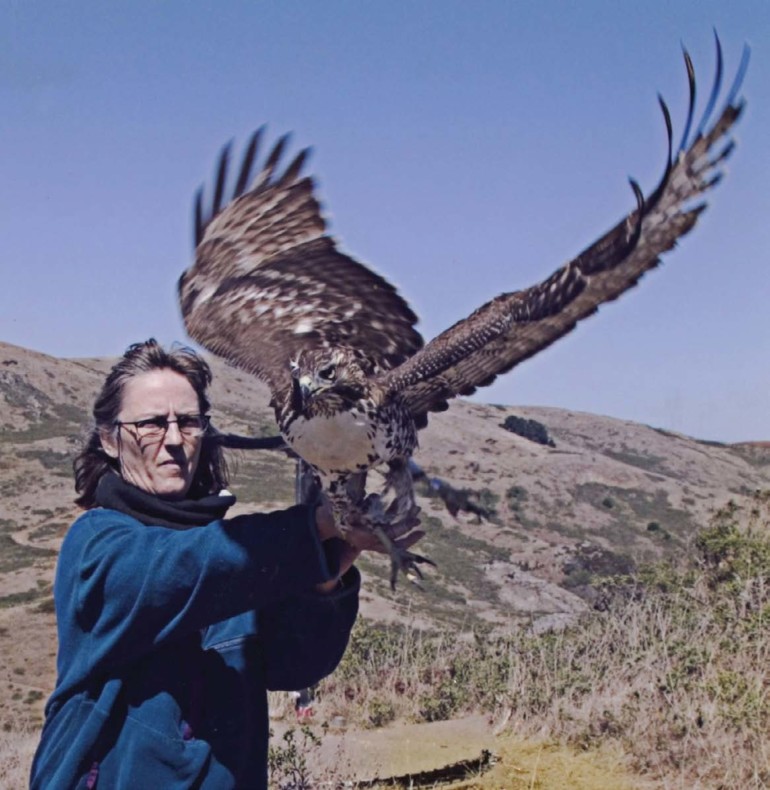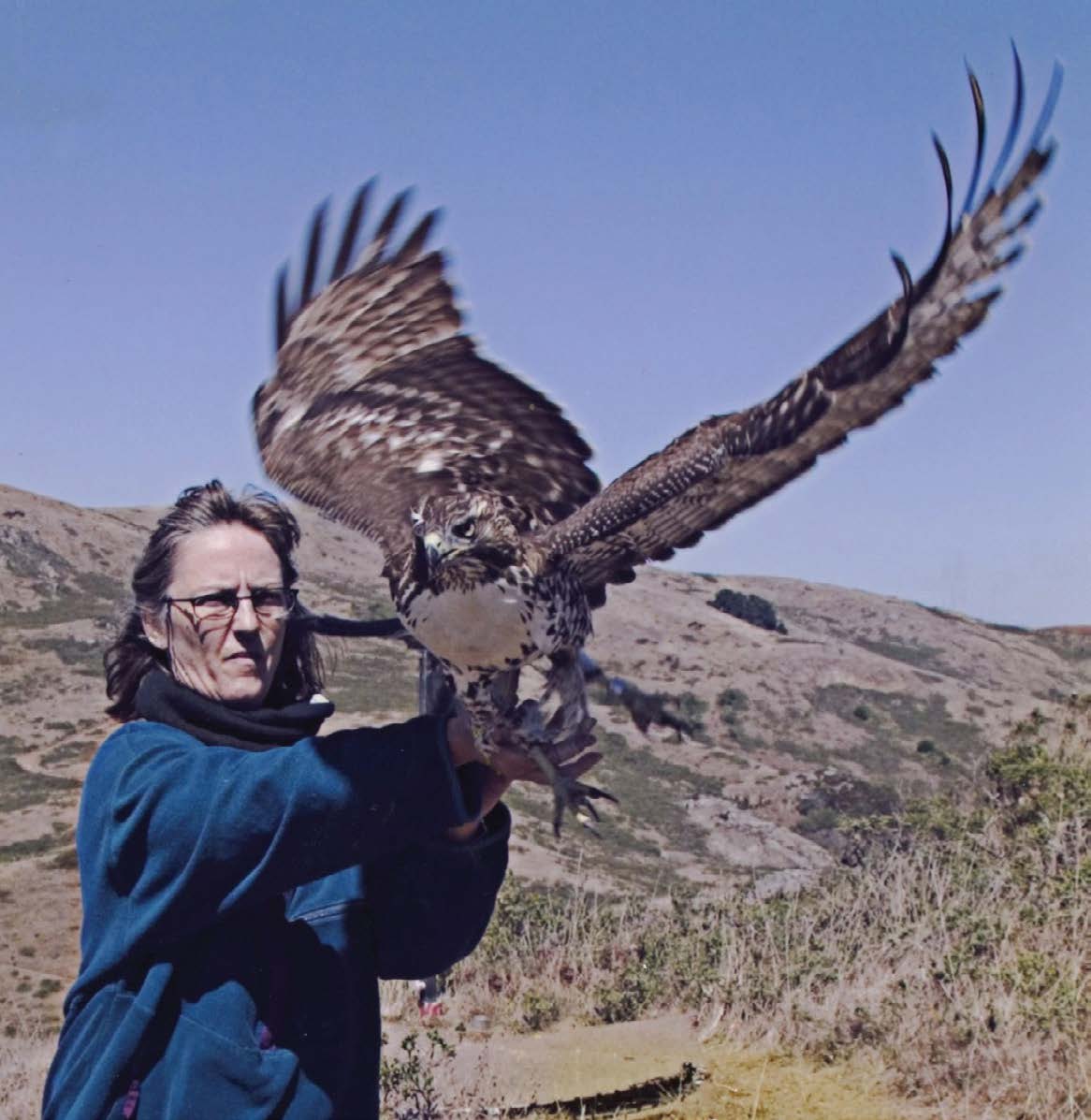
WHEN I FLINCHED even the slightest bit, the red-tailed hawk tightened her viselike grip on my right thigh. Her talon was more than an inch long. It was sturdy and had a finely pointed tip that had slipped effortlessly through my jeans and pierced my soft flesh, inducing excruciating pain. The hawk was large — her wingspan was more than four feet. I figured I needed at least four hands to free myself: one to hold the bird, whose instinct was to grasp me and fly away; one to hold her free foot, so she didn’t seize me with that; and two to hold the offending foot and pull out the talon, which was curved like a huge fish hook. It was quite a predicament, and not an uncommon one among inexperienced raptor banders.
Actually, as soon as I held my first bird I was hooked — in the metaphorical sense. There is something magical about seeing a bird of prey up close, looking it in the eye, and feeling its raw power. There is something addicting about being witness to its magnificent wildness.
That’s why I volunteered to be a bander with the Golden Gate Raptor Observatory (GGRO), a citizen-science organization associated with the Golden Gate National Parks Conservancy and the National Park Service that’s been tracking birds of prey in Northern California for more than 30 years. It’s why I was in a small, dark bird blind on Hawk Hill, in the windswept Marin Headlands. And it’s why I was stuck, immobile, with a sharp talon in my leg and searing pain on my mind.
Fortunately, I was not alone. It takes a team to catch a hawk, and I was part of a group of 10 banders working in four blinds that day. My blind-mate was Buzz, an experienced bander and the GGRO’s director of research. There’s no one I’d rather be in a blind with. Buzz understands the way hawks behave. He knows how to read the wind and figure out how the birds will be flying. He can look at a hawk’s plumage — the subtle variations in color, the length of the flight feathers in relation to each other, the amount of wear on the feathers’ edges — and determine the bird’s age. And he knows how to trap a bird and handle it safely — which, clearly, I did not.
It isn’t easy to catch a hawk. The other banders and I went through an extensive training program that includes learning to set up three kinds of nets — bow nets, mist nets and dho-gazzas — because different nets work best in different weather conditions, and for catching different-size birds. Nineteen species of raptors pass through the headlands; big redtails and the smaller Cooper’s hawks and sharp-shinned hawks are most common.
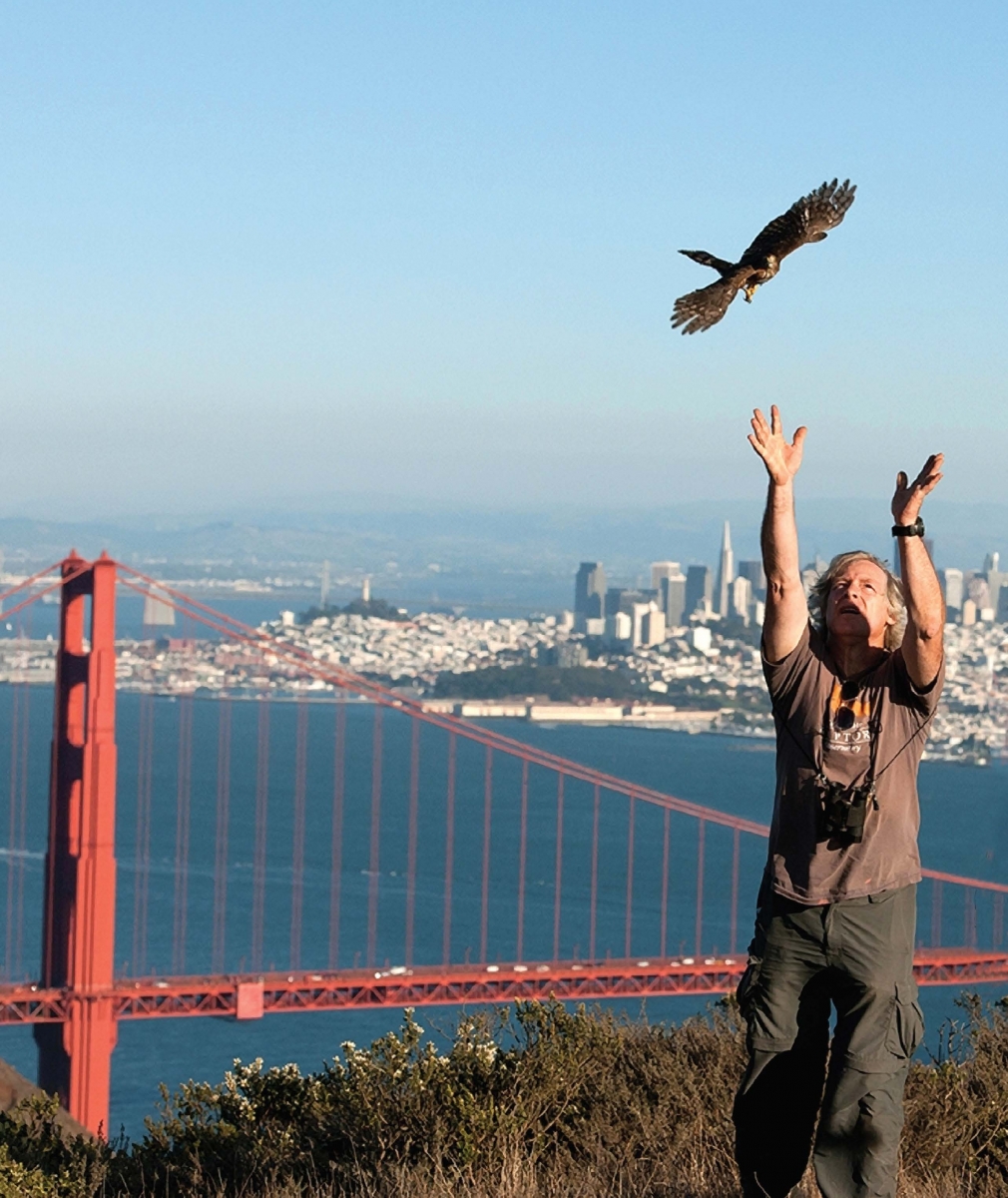
We use bow nets for the larger birds, and mist nets or dho-gazzas for the smaller ones, unless it’s very windy, in which case we skip the dho-gazzas because they won’t stay up if there’s more than a light breeze. No matter which kind we use, catching the birds is a challenge. The altitude and direction they’re flying in from, the angle of approach, the wind currents, the time of day and position of the sun — all these factors play into the trapping equation.
Getting the birds out of the nets is often challenging, too. Sometimes they dive deeply into the mesh, requiring us to snip the netting to disentangle them, which means a net-repair job, which takes time away from trapping. Other times they get a wing stuck, or bite us as we try to extricate them.
We don’t hold on to the hawks for very long. Once we’ve untangled them from the net, our job is to perform a quick set of assessments and release the birds unharmed. The first thing we do is attach a small, numbered band to the “ankle” of each bird we catch, so it can be identified if it’s captured again, either here or somewhere else. Then we measure and weigh the birds and record data: each bird’s age and sex; whether their crops (esophageal pouches) are full or empty; whether they appear to have any injuries or abnormalities; and the length of their wings, tails, beaks and talons.
Obtaining those measurements can be tricky. While some birds are relatively calm, others are spirited. American kestrels, for example, are infamous for pecking. Approximately the size of a robin, these feisty falcons nip at our fingers as we extricate them from the net, focusing in particular on any hangnails they can reach. (We don’t wear gloves because to be able to perform these maneuvers we need to be able to feel as well as see what we’re doing, and gloves would dull our sense of touch.)
Kestrels peck at the calipers as we adjust the movable tip and attempt to align it with the exact tip of the bird’s upper mandible so we can measure the length of the beak. They bite the little plastic ruler we slip beneath their wings to measure the distance to the tip of the longest wing feather. And who can blame them?
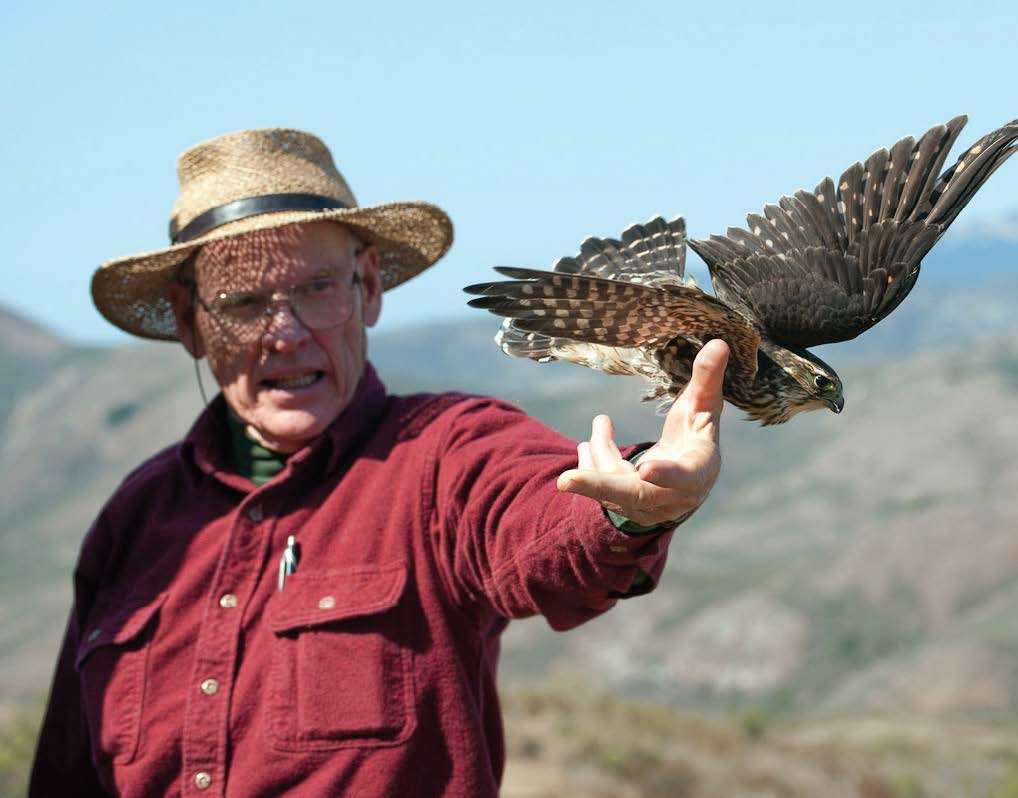
This poking and prodding is akin to what humans might undergo at an annual physical exam in the doctor’s office. While no one would characterize it as enjoyable, it’s usually only mildly annoying. For hawks as for humans, it’s important for monitoring the health of both the individual and the species. Carnivorous raptors, being high up on the food chain, warn us of contaminants like DDT — and, more recently, rat poison — that have worked their way into the environment and threaten many species.
It takes hundreds of volunteer field biologists to gather all this avian data. We banders work every single day of the week during the August-to-December migration season, catching hawks during most of the daylight hours. In just over 30 years the GGRO has trapped more than 40,000 hawks, keeping meticulous records about each one. But the bird I was concerned about that day was the one gripping my thigh.
“Buzz, when you have a moment, I could use some help.” I spoke softly and slowly. Buzz is not the kind of person who makes sudden movements, but I wasn’t taking any chances. A sudden movement would cause certain pain.
“OK; give me a minute here.” Buzz was bent over a Cooper’s hawk he had just caught, measuring its wing length. He did not look up.
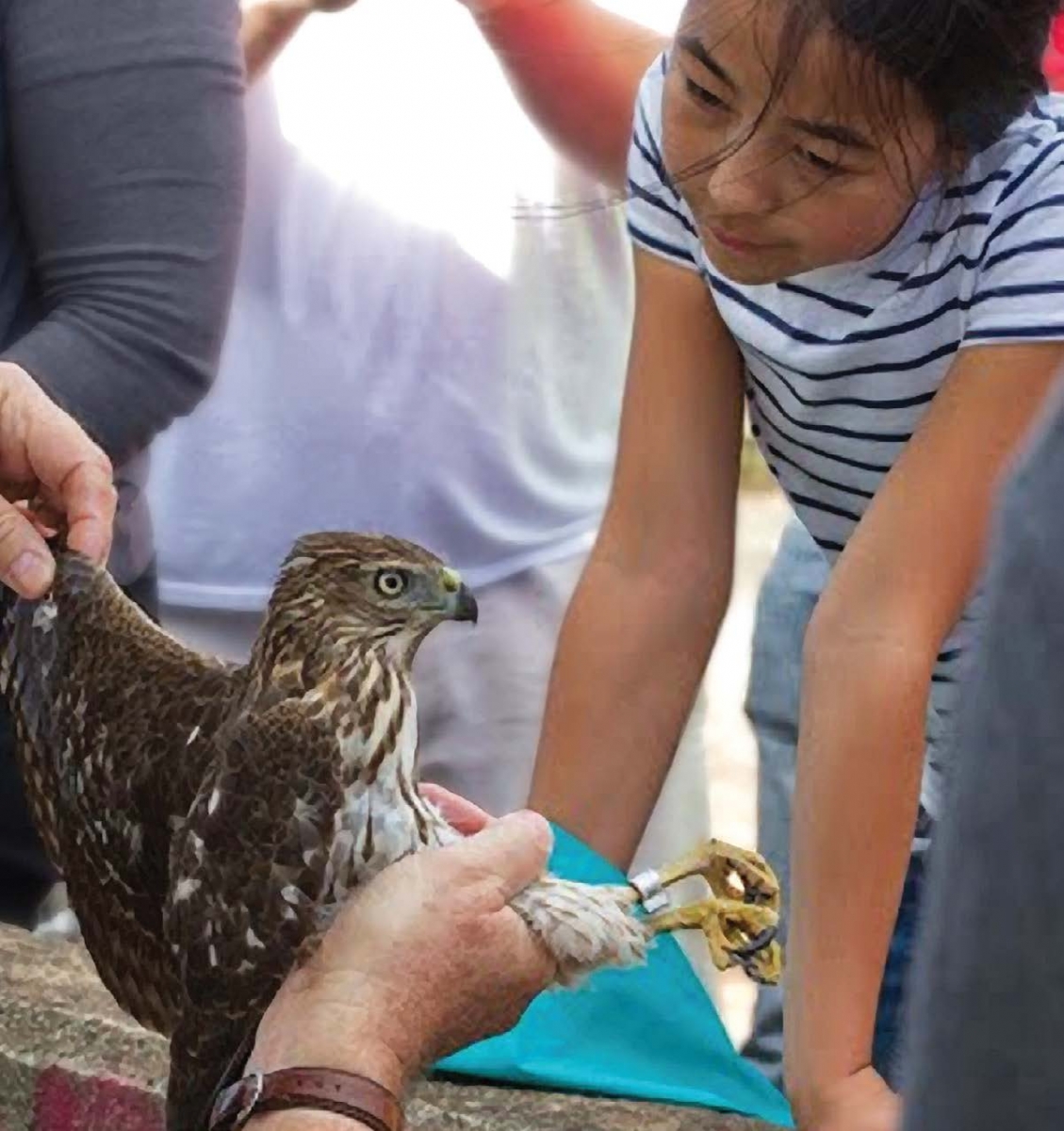
I decided to wait for Buzz to finish his work before explaining my predicament. He worked quickly; it would only be a few minutes. The sound of our voices made my bird nervous, and when she felt nervous she tightened her grip. As long as the bird and I were both relaxed, and no one was moving or speaking, the pain was quite bearable. Once Buzz finished with his “Coop,” we could focus on my redtail.
I felt a little light-headed and needed to distract myself from the pain, so I looked more closely at the raptor in my lap. Its breast feathers were bright white; the stomach was a bit darker, with buff-colored streaks. Its back was chocolaty-brown and the tail was dark brown with thin paler bands. (This was a first-year bird; the distinctive brick-red tail feathers would not grow in until the following year.) All the feathers were in good condition, and I saw no lice or other ecto-parasites; that was a good sign.
I didn’t want to look directly at the hawk’s eyes, thinking that might antagonize the creature. But I couldn’t help myself. They were mesmerizing: fierce, bright and alert, with pale golden irises.
When I saw that Buzz was nearly finished with his Cooper’s hawk, I continued. “I’ve been footed.” Footed is the technical term for having a hawk’s talon deeply embedded in some part of your body. It’s embarrassing, because it means you haven’t been paying close enough attention to what you’re doing. You have not properly controlled the hawk’s feet. You have made a stupid mistake. The only good thing about being footed is that it hurts so much you will probably never let it happen again.
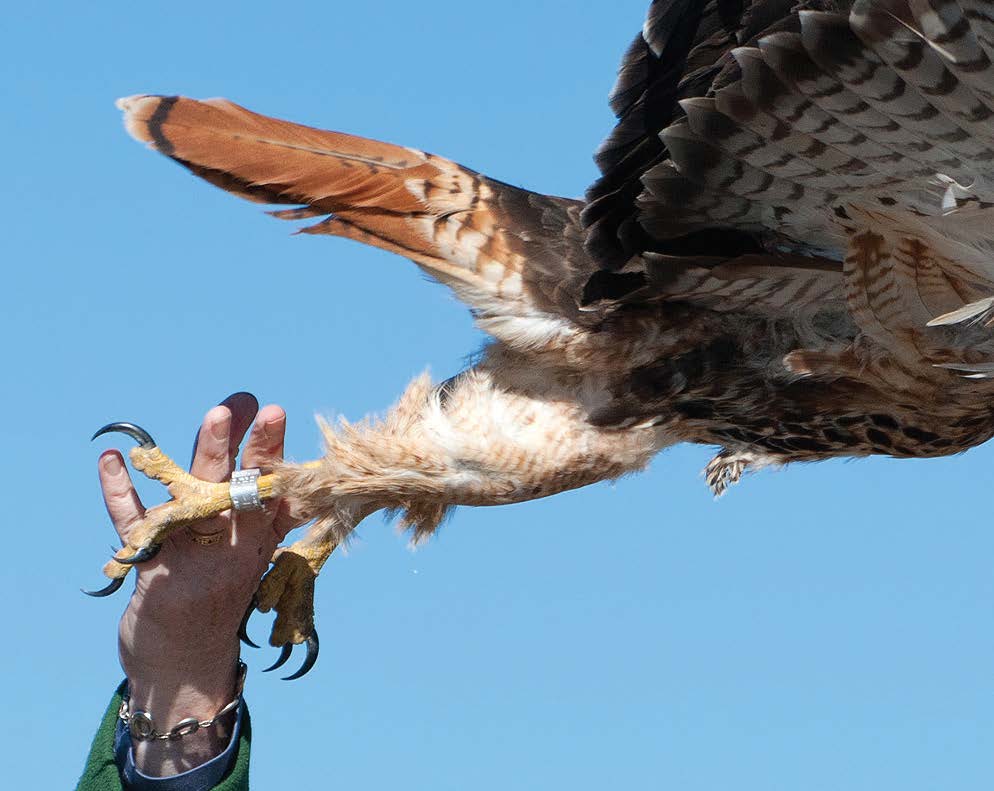
Buzz turned toward me slowly, assessing the situation. It may have taken a few seconds for him to move to my side, or maybe it took a year. It was certainly a good 10 minutes before he was able to pry open the hawk’s clenched foot and slide the curved talon out of my leg.
Liberated from the red-tail’s grasp at last, I lay down on the rough wooden floor of the blind and closed my eyes. Buzz stepped outside and released the red-tail, which I’m sure seemed unconcerned as it flew away. They always are. Often a hawk will even give a quick little shiver as it flaps away, as if to shake off the memory of a close encounter with humans.
The pain subsided quickly, and soon a deep puncture wound was all that remained of my avian adventure. That was 10 years ago and even though I was freed from that hawk’s grasp, I will never be free from my fascination with these wild creatures. I sustained no further injuries from this event, but something about these magical birds captured my imagination and pierced me to the quick. And every time I look in a hawk’s eyes, I am hooked all over again.
This article originally appeared in Marin Magazine’s print edition under the headline: “Hooked on Marin’s Hawk Hill.”

Marketing communications consultant Laurie McAndish King has an insatiable wanderlust. She has traveled to nearly forty countries and is an award-winning travel writer whose essays and photography have appeared in Smithsonian magazine, the San Francisco Chronicle, Travelers’ Tales’ The Best Women’s Travel Writing, The Sun literary journal and other magazines and literary anthologies. Laurie moved to Marin County in 1993 and continues to reside here with her husband and two cats.

